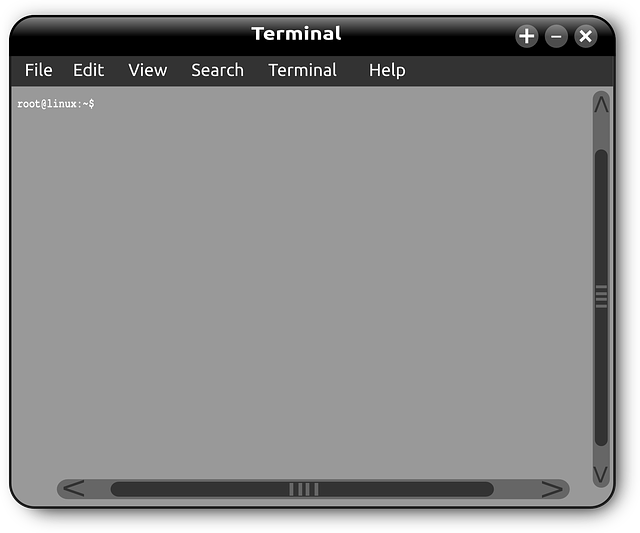Library automation on Linux systems has significantly advanced with the introduction of file systems like Btrfs, ZFS, and XFS. Btrfs offers subvolumes, copy-on-write technology, and snapshot capabilities for efficient management of large digital collections, ensuring data integrity and facilitating backup and version management. ZFS brings high-integrity data verification through checksums and simplifies backup processes, replication, and disaster recovery, maintaining the accuracy and completeness of bibliographic records. XFS stands out with its robustness and performance, particularly for handling large files and directories with fast read/write speeds, making it ideal for libraries transitioning to digital collections. All three file systems are highly compatible with Linux and offer advanced features that enhance the stability and efficiency of library automation systems, ensuring they can adapt to growing data demands and provide seamless access to information. These file systems are integral to the evolution of modern library management, offering scalable, reliable solutions for librarians leveraging Linux-based systems.
In the realm of data management, librarians and information professionals are constantly seeking advanced file systems that offer robustness, performance, and versatility. This article delves into the innovative approaches to data organization within libraries, leveraging cutting-edge Linux-based solutions. We will explore the capabilities of Btrfs in enhancing data management, the strengths of ZFS for library automation systems, the implementation of XFS for high-performance storage needs, and the customizable nature of FUSE filesystems. Additionally, we will discuss the integration of LUSTRE file system for large-scale data storage challenges faced by libraries today. Each file system brings unique advantages to the table, contributing to the efficient and secure handling of vast digital collections, ensuring that library automation with Linux remains at the forefront of technological advancements.
- Exploring the Capabilities of Btrfs for Enhanced Data Organization in Libraries
- ZFS's Role in Robust Data Management for Library Automation Systems
- Implementing XFS for High-Performance Storage Solutions in Library Environments
- Leveraging FUSE Filesystems for Custom Data Handling in Library Automation
- The Integration of LUSTRE File System in Large-Scale Library Data Storage Needs
Exploring the Capabilities of Btrfs for Enhanced Data Organization in Libraries

Btrfs, an advanced file system that debuted in 2008 as an experimental project within the Linux kernel, has evolved into a robust solution for data organization, particularly beneficial for complex environments such as libraries. It stands out with its sophisticated features that cater to the needs of automated library systems running on Linux. One of the standout capabilities of Btrfs is its ability to handle large volumes of data with ease, thanks to its space-saving techniques like subvolumes and copy-on-write (CoW) technology. This allows for efficient organization of vast digital collections, akin to the meticulous classification systems employed in traditional physical libraries.
Furthermore, Btrfs’s snapshot functionality is particularly advantageous for library automation. It enables the creation of point-in-time copies of data, facilitating tasks such as backup and version management. This feature is instrumental in maintaining the integrity of digital assets within a library’s repository, ensuring that even with frequent additions or modifications, the original content remains accessible and unaltered. The file system’s robustness is further complemented by its error correction mechanisms and data checksumming, which enhance the reliability of stored information. These attributes make Btrfs an excellent choice for libraries seeking to optimize their data organization strategies on Linux-based systems.
ZFS's Role in Robust Data Management for Library Automation Systems

ZFS, a cutting-edge file system engineered by Sun Microsystems and subsequently adopted into the FreeBSD, OpenSolaris, and eventually Linux projects, has become a pivotal component in robust data management, particularly within library automation systems. Its integration with Linux has been instrumental in enhancing the capabilities of automated library systems, which are increasingly reliant on advanced storage solutions to handle vast collections of digital assets efficiently. ZFS’s role is multifaceted; it provides a high degree of data integrity through checksum-based verification, ensuring that the information stored remains accurate and intact. This is crucial for library automation with Linux, where the integrity of bibliographic records and digital media must be preserved without error.
Furthermore, ZFS introduces innovative features such as copy-on-write cloning and snapshots, which are particularly beneficial in a library automation context. These features allow for the efficient management of data volumes, facilitating tasks like backups, replication, and disaster recovery. The snapshots enable librarians to capture the state of the system at any point in time, providing a reliable way to manage changes and updates to the digital collection. This level of control and flexibility is essential for maintaining the availability and accessibility of resources in an automated library environment. The integration of ZFS with Linux-based systems ensures that these functionalities are readily available, making it a prime solution for librarians who aim to leverage the power of open-source software to manage their digital libraries effectively.
Implementing XFS for High-Performance Storage Solutions in Library Environments

In modern library automation systems, the efficiency and performance of storage solutions play a pivotal role in managing vast collections of digital assets. Implementing the XFS file system on Linux platforms offers significant advantages for high-performance storage in such environments. XFS, known for its robustness and scalability, is particularly adept at handling large volumes of data with minimal latency. It excels in environments where metadata operations are frequent and require quick processing, a common scenario in libraries that are digitizing their collections. The XFS file system’s ability to support large files and directories, along with its advanced features like fast read/write performance, 64-bit inode and block sizes, and strong journaling capabilities, make it an ideal choice for librarians seeking to automate their storage systems under Linux. This not only facilitates the seamless organization of digital resources but also ensures data integrity and availability, which are paramount in library settings where access to information is critical.
Furthermore, the integration of XFS with Linux-based systems enhances the capabilities of library automation software by providing a stable and reliable storage foundation. The file system’s support for large files and its efficient handling of I/O operations are particularly beneficial for libraries that deal with digital archives, multimedia content, and other large-scale data assets. Additionally, XFS’s compatibility with a wide range of hardware RAID controllers and its support for cutting-edge storage technologies ensure that library automation systems can leverage the latest advancements in storage solutions. This not only improves the performance of existing digital libraries but also future-proofs them against the growing data demands of tomorrow’s information-seeking patrons.
Leveraging FUSE Filesystems for Custom Data Handling in Library Automation

In the realm of library automation within Linux environments, FUSE (Filesystem in Userspace) Filesystems emerge as a versatile tool for custom data handling. FUSE allows for the creation of filesystems with minimal kernel support, enabling developers to design and implement specialized filesystems tailored to specific use cases, such as library management. This flexibility is particularly advantageous in libraries seeking to automate their operations, as it facilitates the integration of library data structures into the filesystem hierarchy of a Linux system. By leveraging FUSE, libraries can manipulate digital assets, like e-books and multimedia resources, with precision and efficiency. The filesystem abstraction provided by FUSE enables these resources to be organized, retrieved, and managed in ways that are optimized for the unique demands of library automation systems.
Furthermore, FUSE Filesystems offer a robust framework for handling diverse data formats commonly used in libraries, such as MARC records and bibliographic databases. The ability to mount these datasets as virtual filesystems allows librarians and developers to apply familiar file operations—like copying, moving, and indexing—to complex bibliographic information. This integration with Linux’s native file management utilities streamlines the automation processes, from cataloging new acquisitions to facilitating user search queries and resource checkouts. The use of FUSE in library automation not only enhances data organization but also paves the way for innovative solutions that can adapt to evolving library needs and digital trends.
The Integration of LUSTRE File System in Large-Scale Library Data Storage Needs

In conclusion, the exploration of advanced file systems for data organization within libraries has revealed significant potential for enhancing efficiency and robustness through library automation with Linux. Btrfs’s capabilities stand out for their enhanced data protection and management, positioning it as a go-to option for handling the complexities of modern library collections. ZFS complements this by offering reliable data management solutions tailored for library automation systems, ensuring data integrity is maintained amidst the constant influx of information. XFS’s high-performance storage features make it an excellent fit for environments demanding fast and consistent I/O performance, a critical aspect in supporting large digital archives. Furthermore, FUSE filesystems provide the flexibility to customize data handling to meet specific library automation needs, reflecting the dynamic nature of digital content management. Lastly, the LUSTRE file system’s scalability and performance are unparalleled for handling vast amounts of data in a large-scale library setting. Collectively, these advanced file systems not only streamline data organization but also pave the way for more sophisticated library automation with Linux, ensuring libraries remain at the forefront of technological advancements and data management excellence.


























